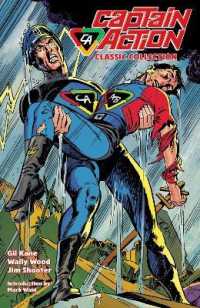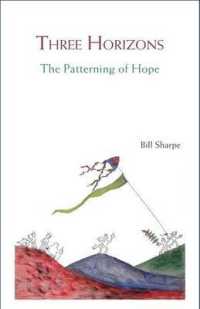- ホーム
- > 洋書
- > 英文書
- > Transportation
Full Description
Every day up to 3,000 aircraft fly across the Atlantic Ocean. If each one carries 250 passengers, that could mean as many as 750,000 people on the move between Europe and North America.
The main concern for most is the choice of in-flight movie or whether to have beef or chicken for dinner. A century ago it was very different. Before John Alcock and Arthur Whitten Brown's epic flight of June 1919 no such journey had been attempted and they could not know what to expect.
Of course, it took all the guts and determination the two men could muster but there was something else. Alcock and Brown were true professionals. Both had thought very deeply about the challenges facing them and both were determined to leave nothing to chance. In the background was the GBP10,000 prize offered by Lord Northcliffe, whose generosity represented a potent incentive for pioneer aviators.
Inevitably, the names of Alcock and Brown have become synonymous with that first trans-Atlantic flight. They were the first but by no means the last of the trans-Atlantic pioneers. There were many others, some of whom are just as celebrated, while others have sunk into obscurity.
His Majesty's airship R-34, for example, made the first flight from east to west and followed that up with the first return crossing. Charles Lindbergh made the first flight from the North American mainland to that of Europe. Amelia Earhart was the first woman to make a solo crossing.
In the 1930s the German Zeppelins, which only a few years earlier had been terrifying London with their bombs, were offering the first regular commercial flights. They proved popular despite their high cost and the ever-present threat of immolation - eventually realised - caused by the inflammable hydrogen used as a lifting agent.
It took the demands of war to prove that the Atlantic could be crossed regularly by heavier-than-air craft and pave the way for the post-war commercial operations that followed. In the 1950s came the first jets, followed by the first supersonic airliners.
Still the pioneering went on: the first cut-price operations and the first by the twin-engine jets that brought undreamed-of flexibility to long-distance travel and now dominate the trans-Atlantic airways.
And the pioneering on what is still the world's busiest and most prestigious intercontinental air route will continue. Who, the book concludes by asking, will operate the first airliner featuring hybrid power, the first fully autonomous machine, the first to use other than fossil fuel?
Will the next hundred years be exciting as those truly pioneering days of the past?








